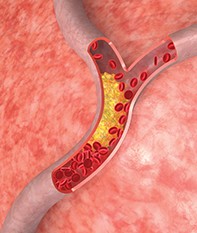Peer Reviewed
Feature Article Pharmacology and therapeutics
Update on lipid management: commonly asked questions
Abstract
LDL-cholesterol (LDL-C) target levels in patients with cardiovascular disease (CVD) are getting lower. New statin combinations will be more cost effective than present combinations and will help to achieve LDL-C targets. These and other drugs in development promise a new era in CVD prevention.
Key Points
- Always repeat an abnormal lipid profile when checking for secondary causes of dyslipidaemia.
- Initiate statin therapy at a dose to achieve target LDL-C levels without dose titration. Check lipid profile, creatine kinase, liver enzymes and symptoms six to 12 weeks after statin initiation or up-titration.
- Add ezetimibe if target LDL-C is not achieved on maximum tolerated dose of statin.
- Check alcohol, refined carbohydrate and fat intakes in patients with high TG levels.
- Fibrates and high-dose fish oils are more effective than statins at lowering TG levels.
- Fenofibrate is preferred to gemfibrozil for combination with statins.
- A low HDL-C level is often secondary to a high TG level; the TG level should be controlled before treating to raise the HDL-C level.
- Any move towards target levels is of potential benefit, even though targets may not be reached.
Purchase the PDF version of this article
Already a subscriber? Login here.

